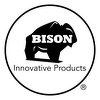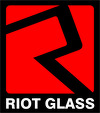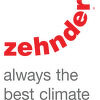
The Louisiana State Board of Architectural Examiners
The Louisiana State Board of Architectural Examiners regulates the practice of architecture, the development and application of standards, and programs for licensure and credentialing of architects.
Click to Learn More About the Louisiana State Board of Architectural Examiners
Scan this code with your mobile device camera to take this page on-the-go!

https://redirect.aecdaily.com/s20276/www.aecdaily.com/course/957452

 Architectural metal fabric is a dynamic interior and exterior material used to create beautiful and functional façades, balustrades, and screening for a wide variety of commercial and public structures. This course discusses applications for metal fabric and its performance benefits, including safety, security, solar management, and sustainability. It also discusses how coatings and graphics technologies can be incorporated into metal fabrics to enhance branding and visual identity.
Architectural metal fabric is a dynamic interior and exterior material used to create beautiful and functional façades, balustrades, and screening for a wide variety of commercial and public structures. This course discusses applications for metal fabric and its performance benefits, including safety, security, solar management, and sustainability. It also discusses how coatings and graphics technologies can be incorporated into metal fabrics to enhance branding and visual identity.
Scan this code with your mobile device camera to take this page on-the-go!

https://redirect.aecdaily.com/s1773/www.aecdaily.com/course/858685

 The use of life safety dampers is driven by requirements in various building codes. There are many different applications for which fire, fire/smoke, smoke, and/or ceiling radiation dampers can be used, each having its own specific purpose and unique installation requirements. This course gives an in-depth look at the different types of dampers and explains how and where they're each used and installed.
The use of life safety dampers is driven by requirements in various building codes. There are many different applications for which fire, fire/smoke, smoke, and/or ceiling radiation dampers can be used, each having its own specific purpose and unique installation requirements. This course gives an in-depth look at the different types of dampers and explains how and where they're each used and installed.
Scan this code with your mobile device camera to take this page on-the-go!

https://redirect.aecdaily.com/s17339/www.aecdaily.com/course/829062

 Rooftop decks create valuable living and recreational space for building owners, residents, and clients. Accommodating restaurants, hotels, healthcare facilities, and everything from residential to government buildings, rooftop deck systems offer the design flexibility to create versatile, unique outdoor spaces over any structural surface. This course explores the features, surface materials, and design options for rooftop deck systems and provides an overview of recommended planning and installation guidelines.
Rooftop decks create valuable living and recreational space for building owners, residents, and clients. Accommodating restaurants, hotels, healthcare facilities, and everything from residential to government buildings, rooftop deck systems offer the design flexibility to create versatile, unique outdoor spaces over any structural surface. This course explores the features, surface materials, and design options for rooftop deck systems and provides an overview of recommended planning and installation guidelines.
Scan this code with your mobile device camera to take this page on-the-go!

https://redirect.aecdaily.com/s1124494/www.aecdaily.com/course/1138490

 This course provides a comprehensive overview of quartz surfacing as a sustainable material in contemporary design. It examines the environmental impact, safety standards, and wide-ranging applications of quartz surfacing. The course focuses on manufacturing processes, performance characteristics, and the material’s contribution to sustainability, equipping participants with the knowledge to effectively utilize quartz surfacing in residential and commercial projects.
This course provides a comprehensive overview of quartz surfacing as a sustainable material in contemporary design. It examines the environmental impact, safety standards, and wide-ranging applications of quartz surfacing. The course focuses on manufacturing processes, performance characteristics, and the material’s contribution to sustainability, equipping participants with the knowledge to effectively utilize quartz surfacing in residential and commercial projects.
Scan this code with your mobile device camera to take this page on-the-go!

https://redirect.aecdaily.com/s877426/www.aecdaily.com/course/938800

 Mechanical vibration and structure-borne noise exist in all building environments. Depending on how severe the disturbance and how sensitive the equipment, the problems caused by the vibration or shock can be negligible or destructive. This course explains why, during the entire building design process, it is essential to consider what a building is being used for and the potential impact of vibration and structure-borne noise, not only from external sources but also from equipment running within the building.
Mechanical vibration and structure-borne noise exist in all building environments. Depending on how severe the disturbance and how sensitive the equipment, the problems caused by the vibration or shock can be negligible or destructive. This course explains why, during the entire building design process, it is essential to consider what a building is being used for and the potential impact of vibration and structure-borne noise, not only from external sources but also from equipment running within the building.
Scan this code with your mobile device camera to take this page on-the-go!

https://redirect.aecdaily.com/s976306/www.aecdaily.com/course/979570

 Acrylic solid surface is an attractive design solution, delivering enhanced aesthetics combined with superior performance properties. This course compares the characteristics of 100% acrylic solid surface to other surface materials and reviews the driving factors that contribute to its growing role in sustainable design strategies. Also discussed are the manufacturing, fabricating, and thermoforming processes of acrylic solid surface and the related green standards and certification programs.
Acrylic solid surface is an attractive design solution, delivering enhanced aesthetics combined with superior performance properties. This course compares the characteristics of 100% acrylic solid surface to other surface materials and reviews the driving factors that contribute to its growing role in sustainable design strategies. Also discussed are the manufacturing, fabricating, and thermoforming processes of acrylic solid surface and the related green standards and certification programs.
Scan this code with your mobile device camera to take this page on-the-go!

https://redirect.aecdaily.com/s727499/www.aecdaily.com/course/852694

 Green facades can contribute to building energy efficiency, durability, aesthetic value, sustainability, and cost effectiveness in the performance of ecological system services. This course examines the considerations required for successful green facade installations and includes discussions on system selection, design, plant selection, maintenance, and client/owner education.
Green facades can contribute to building energy efficiency, durability, aesthetic value, sustainability, and cost effectiveness in the performance of ecological system services. This course examines the considerations required for successful green facade installations and includes discussions on system selection, design, plant selection, maintenance, and client/owner education.
Scan this code with your mobile device camera to take this page on-the-go!

https://redirect.aecdaily.com/s858139/www.aecdaily.com/course/880596

 In a riot, burglary, or active shooter event, the importance of keeping an armed intruder out of a building cannot be underestimated. Examined here are fenestration security risks, considerations, and solutions for educational, religious, commercial, and retail applications, as well as applicable performance testing and standards. The course provides an in-depth discussion on new, retrofit access-denial glazing systems that provide maximum protection against forced entry and ballistic threats.
In a riot, burglary, or active shooter event, the importance of keeping an armed intruder out of a building cannot be underestimated. Examined here are fenestration security risks, considerations, and solutions for educational, religious, commercial, and retail applications, as well as applicable performance testing and standards. The course provides an in-depth discussion on new, retrofit access-denial glazing systems that provide maximum protection against forced entry and ballistic threats.
Scan this code with your mobile device camera to take this page on-the-go!

https://redirect.aecdaily.com/s17282/www.aecdaily.com/course/888035

 Can commercial overhead doors contribute to the sustainability goals of buildings requiring garage, drive-through, fire, dock, and service products? To meet these goals, commercial sectional and rolling doors should be engineered to provide energy efficiency and personnel protection, and to mitigate fire and wind damage. This course examines the sustainable attributes of commercial overhead doors and explores their design potential in LEED® compliant projects.
Can commercial overhead doors contribute to the sustainability goals of buildings requiring garage, drive-through, fire, dock, and service products? To meet these goals, commercial sectional and rolling doors should be engineered to provide energy efficiency and personnel protection, and to mitigate fire and wind damage. This course examines the sustainable attributes of commercial overhead doors and explores their design potential in LEED® compliant projects.
Scan this code with your mobile device camera to take this page on-the-go!

https://redirect.aecdaily.com/s356556/www.aecdaily.com/course/1042076

 This introductory course on spray polyurethane foam (SPF) covers component chemistry, different types of SPF, and the proper use of SPF in construction applications. In addition, the course addresses code compliance related to SPF for residential and commercial construction, as well as safe SPF installation practices. Participants will come away with a strong knowledge of how the proper use and application of spray foam can improve the indoor environment and the durability of the built environment.
This introductory course on spray polyurethane foam (SPF) covers component chemistry, different types of SPF, and the proper use of SPF in construction applications. In addition, the course addresses code compliance related to SPF for residential and commercial construction, as well as safe SPF installation practices. Participants will come away with a strong knowledge of how the proper use and application of spray foam can improve the indoor environment and the durability of the built environment.
Scan this code with your mobile device camera to take this page on-the-go!

https://redirect.aecdaily.com/s20151/www.aecdaily.com/course/926641

 The increase in building energy efficiency requirements has led to the use of exterior continuous insulation (CI) to improve the performance of the building envelope. This presentation reviews the benefits of polyiso continuous insulation and then examines in detail the NFPA 285 test standard and fire safety requirements of the 2021 International Building Code for the use of polyisocyanurate insulation in exterior walls of commercial buildings (Construction Types I–IV).
The increase in building energy efficiency requirements has led to the use of exterior continuous insulation (CI) to improve the performance of the building envelope. This presentation reviews the benefits of polyiso continuous insulation and then examines in detail the NFPA 285 test standard and fire safety requirements of the 2021 International Building Code for the use of polyisocyanurate insulation in exterior walls of commercial buildings (Construction Types I–IV).
Scan this code with your mobile device camera to take this page on-the-go!

https://redirect.aecdaily.com/s1092062/www.aecdaily.com/course/1134323

 Residential solar power generates clean energy, reduces carbon footprint, protects against rising electricity rates, and protects property from outages, but it is only effective during daylight hours. Adding battery storage to a solar system—called solar plus storage—removes this limitation and moves a home closer to energy independence. In this course, we will review the components of a solar-plus-storage system, including selection considerations for residential rooftop solar and DC-coupled solar batteries. The course also reviews the extended system of monitoring and DC charging.
Residential solar power generates clean energy, reduces carbon footprint, protects against rising electricity rates, and protects property from outages, but it is only effective during daylight hours. Adding battery storage to a solar system—called solar plus storage—removes this limitation and moves a home closer to energy independence. In this course, we will review the components of a solar-plus-storage system, including selection considerations for residential rooftop solar and DC-coupled solar batteries. The course also reviews the extended system of monitoring and DC charging.
Scan this code with your mobile device camera to take this page on-the-go!

https://redirect.aecdaily.com/s951403/www.aecdaily.com/course/963073

 Modern interior spaces often feature open areas and hard surfaces. What should be comfortable rooms in these spaces can become unpleasant from noise and echo or sound reverberation. This course discusses how melamine foam can be used to improve the sound quality in a space. The different options for melamine foam products are discussed along with their installation methods. This course also provides an overview of the sustainability features of sound-absorbing melamine foam.
Modern interior spaces often feature open areas and hard surfaces. What should be comfortable rooms in these spaces can become unpleasant from noise and echo or sound reverberation. This course discusses how melamine foam can be used to improve the sound quality in a space. The different options for melamine foam products are discussed along with their installation methods. This course also provides an overview of the sustainability features of sound-absorbing melamine foam.
Scan this code with your mobile device camera to take this page on-the-go!

https://redirect.aecdaily.com/s15796/www.aecdaily.com/course/902546

 Although known for being a strong and versatile building material, there are a number of factors that affect the sustainability of concrete, and a variety of measures that can be taken to increase its durability and extend its service life, thus protecting the health, safety, and welfare of the users. This course discusses the environmental impact of concrete and some of the main causes of concrete deterioration, and examines how crystalline waterproofing technology can be employed to increase the durability and sustainability of concrete.
Although known for being a strong and versatile building material, there are a number of factors that affect the sustainability of concrete, and a variety of measures that can be taken to increase its durability and extend its service life, thus protecting the health, safety, and welfare of the users. This course discusses the environmental impact of concrete and some of the main causes of concrete deterioration, and examines how crystalline waterproofing technology can be employed to increase the durability and sustainability of concrete.
Scan this code with your mobile device camera to take this page on-the-go!

https://redirect.aecdaily.com/s485236/www.aecdaily.com/course/656814

 “Sustainable” design isn’t just “environmental.” It’s design that works for and contributes to the health and welfare of all individuals as well as the planet, now and in the future. This course looks at hand dryers as part of sustainably designed restrooms and discusses how air knife hand dryers benefit the environment through energy efficiency, resource conservation, and waste reduction, and benefit all members of society by meeting ADA requirements and Universal Design principles.
“Sustainable” design isn’t just “environmental.” It’s design that works for and contributes to the health and welfare of all individuals as well as the planet, now and in the future. This course looks at hand dryers as part of sustainably designed restrooms and discusses how air knife hand dryers benefit the environment through energy efficiency, resource conservation, and waste reduction, and benefit all members of society by meeting ADA requirements and Universal Design principles.
Scan this code with your mobile device camera to take this page on-the-go!

https://redirect.aecdaily.com/s677063/www.aecdaily.com/course/1104741

 Designing beautiful, sustainable, high-performance buildings can help your structures leave a lasting impression and positive impact. Insulating concrete forms (ICFs) accomplish that while providing innovative design possibilities for single or multistory projects. Learn about the features and advantages of building with ICFs designed as a cost-effective, energy-efficient solution that offers substantial benefits over traditional construction methods.
Designing beautiful, sustainable, high-performance buildings can help your structures leave a lasting impression and positive impact. Insulating concrete forms (ICFs) accomplish that while providing innovative design possibilities for single or multistory projects. Learn about the features and advantages of building with ICFs designed as a cost-effective, energy-efficient solution that offers substantial benefits over traditional construction methods.
Scan this code with your mobile device camera to take this page on-the-go!

https://redirect.aecdaily.com/s452302/www.aecdaily.com/course/1112456

 Smart access control and management systems are quickly gaining popularity in multifamily and multitenant properties, and the smart lock market is poised for rapid growth both domestically and internationally. Understanding how smart locks work can be advantageous for architects, specifiers, and construction professionals to help their clients design and develop properties with enhanced security, efficiency, and simplicity in access management. Smart locks are quickly moving beyond mechanical functions to create streamlined, efficient lifestyles. This course discusses the technology, features, and benefits of smart locks while outlining current trends and options.
Smart access control and management systems are quickly gaining popularity in multifamily and multitenant properties, and the smart lock market is poised for rapid growth both domestically and internationally. Understanding how smart locks work can be advantageous for architects, specifiers, and construction professionals to help their clients design and develop properties with enhanced security, efficiency, and simplicity in access management. Smart locks are quickly moving beyond mechanical functions to create streamlined, efficient lifestyles. This course discusses the technology, features, and benefits of smart locks while outlining current trends and options.
Scan this code with your mobile device camera to take this page on-the-go!

https://redirect.aecdaily.com/s1051417/www.aecdaily.com/course/1061717

 Now more than ever, the environmental impacts of products used in construction are a worldwide concern and one that the architecture and design (A&D) community is being asked to address in their work. Environmental product declarations (EPDs) are powerful tools when choosing materials for commercial projects. This course discusses how, where, and why to use EPDs to inform sustainable product selection and specification decisions and how EPDs are incorporated into key green building rating systems and codes, including LEED® v4.1 Building Design and Construction (BD+C) and Interior Design and Construction (ID+C), Green Globes® for New Construction (NC), and the International Green Construction Code® (IgCC®).
Now more than ever, the environmental impacts of products used in construction are a worldwide concern and one that the architecture and design (A&D) community is being asked to address in their work. Environmental product declarations (EPDs) are powerful tools when choosing materials for commercial projects. This course discusses how, where, and why to use EPDs to inform sustainable product selection and specification decisions and how EPDs are incorporated into key green building rating systems and codes, including LEED® v4.1 Building Design and Construction (BD+C) and Interior Design and Construction (ID+C), Green Globes® for New Construction (NC), and the International Green Construction Code® (IgCC®).
Scan this code with your mobile device camera to take this page on-the-go!

https://redirect.aecdaily.com/s6403/www.aecdaily.com/course/1080220

 Water is one of our most valuable resources, yet many states suffer water shortages due to preventable problems such as overuse and leakages. This course discusses the increased need for water conservation and examines the requirements in CALGreen and the LEED® v4.1, Green Globes®, and BREEAM In-Use green building rating systems. The EPA’s WaterSense® initiative is also discussed, along with case studies explaining the benefits of concealed toilet systems and their contribution to water conservation.
This course is one of two identical courses titled Water Conservation: Initiatives and Standards . You will receive credit for taking only one of these courses.
Water is one of our most valuable resources, yet many states suffer water shortages due to preventable problems such as overuse and leakages. This course discusses the increased need for water conservation and examines the requirements in CALGreen and the LEED® v4.1, Green Globes®, and BREEAM In-Use green building rating systems. The EPA’s WaterSense® initiative is also discussed, along with case studies explaining the benefits of concealed toilet systems and their contribution to water conservation.
This course is one of two identical courses titled Water Conservation: Initiatives and Standards . You will receive credit for taking only one of these courses.
Scan this code with your mobile device camera to take this page on-the-go!

https://redirect.aecdaily.com/s19871/www.aecdaily.com/course/699542

 As we become more aware of the levels of toxins in our environment, we are realizing that the quality of air inside our homes is just as important as the quality of air outside our homes. This course outlines why indoor air quality is so important to our health and describes how to improve indoor air quality by using a balanced ventilation system.
As we become more aware of the levels of toxins in our environment, we are realizing that the quality of air inside our homes is just as important as the quality of air outside our homes. This course outlines why indoor air quality is so important to our health and describes how to improve indoor air quality by using a balanced ventilation system.
Scan this code with your mobile device camera to take this page on-the-go!

https://redirect.aecdaily.com/s19829/www.aecdaily.com/course/932660

 Designers, building users, and managers are increasingly focused on building and occupant health as well as energy conservation. This course explores how mixed-mode (hybrid) ventilation systems address all these issues by improving the ratio of fresh air introduced into buildings while reducing energy needs and costs. It describes the benefits, elements, and workings of these systems and provides design guidance and illustrative case studies.
Designers, building users, and managers are increasingly focused on building and occupant health as well as energy conservation. This course explores how mixed-mode (hybrid) ventilation systems address all these issues by improving the ratio of fresh air introduced into buildings while reducing energy needs and costs. It describes the benefits, elements, and workings of these systems and provides design guidance and illustrative case studies.
Scan this code with your mobile device camera to take this page on-the-go!

https://redirect.aecdaily.com/s14798/www.aecdaily.com/course/965465

 Undesirable acoustics in educational spaces have long been considered averse to our goals to effectively teach, create, collaborate, listen, and learn. Now, in the wake of implementing pandemic protocols, our acoustic comfort in these spaces is greatly challenged. This course examines the impacts of poor soundscapes in educational facilities and introduces innovative solutions for improving acoustics in these areas while keeping us comfortable and safe from exposure to emerging viruses.
Undesirable acoustics in educational spaces have long been considered averse to our goals to effectively teach, create, collaborate, listen, and learn. Now, in the wake of implementing pandemic protocols, our acoustic comfort in these spaces is greatly challenged. This course examines the impacts of poor soundscapes in educational facilities and introduces innovative solutions for improving acoustics in these areas while keeping us comfortable and safe from exposure to emerging viruses.
Scan this code with your mobile device camera to take this page on-the-go!

https://redirect.aecdaily.com/s1048457/www.aecdaily.com/course/1058538

 Identify key fenestration design criteria that will fortify buildings against ballistic, blast, forced entry, and environmental threats.
Identify key fenestration design criteria that will fortify buildings against ballistic, blast, forced entry, and environmental threats.
Scan this code with your mobile device camera to take this page on-the-go!

https://redirect.aecdaily.com/s789181/www.aecdaily.com/course/990198

 Concrete is an essential part of modern buildings. As net zero energy buildings become more common, it is crucial to find ways to reduce concrete’s carbon footprint without losing the performance characteristics that make it valuable to the building team. This course explains the sources of concrete’s carbon footprint and explores strategies for reducing embodied carbon and operational carbon in precast sandwich wall panels and insulated architectural cladding.
Concrete is an essential part of modern buildings. As net zero energy buildings become more common, it is crucial to find ways to reduce concrete’s carbon footprint without losing the performance characteristics that make it valuable to the building team. This course explains the sources of concrete’s carbon footprint and explores strategies for reducing embodied carbon and operational carbon in precast sandwich wall panels and insulated architectural cladding.
Scan this code with your mobile device camera to take this page on-the-go!

https://redirect.aecdaily.com/s497605/www.aecdaily.com/course/1097535

 Fireplaces have become standard in living rooms and dens, but gas and electric fireplaces can enhance many other areas of the home. This course reviews studies on the health and wellness benefits of fireplaces; architects and designers will learn how to add value when working with clients by providing them with scientific research that shows including fireplaces in home design has positive impacts on physical and mental health. Heat management methods, fireplace types and configurations, and media and design options are also discussed.
Fireplaces have become standard in living rooms and dens, but gas and electric fireplaces can enhance many other areas of the home. This course reviews studies on the health and wellness benefits of fireplaces; architects and designers will learn how to add value when working with clients by providing them with scientific research that shows including fireplaces in home design has positive impacts on physical and mental health. Heat management methods, fireplace types and configurations, and media and design options are also discussed.